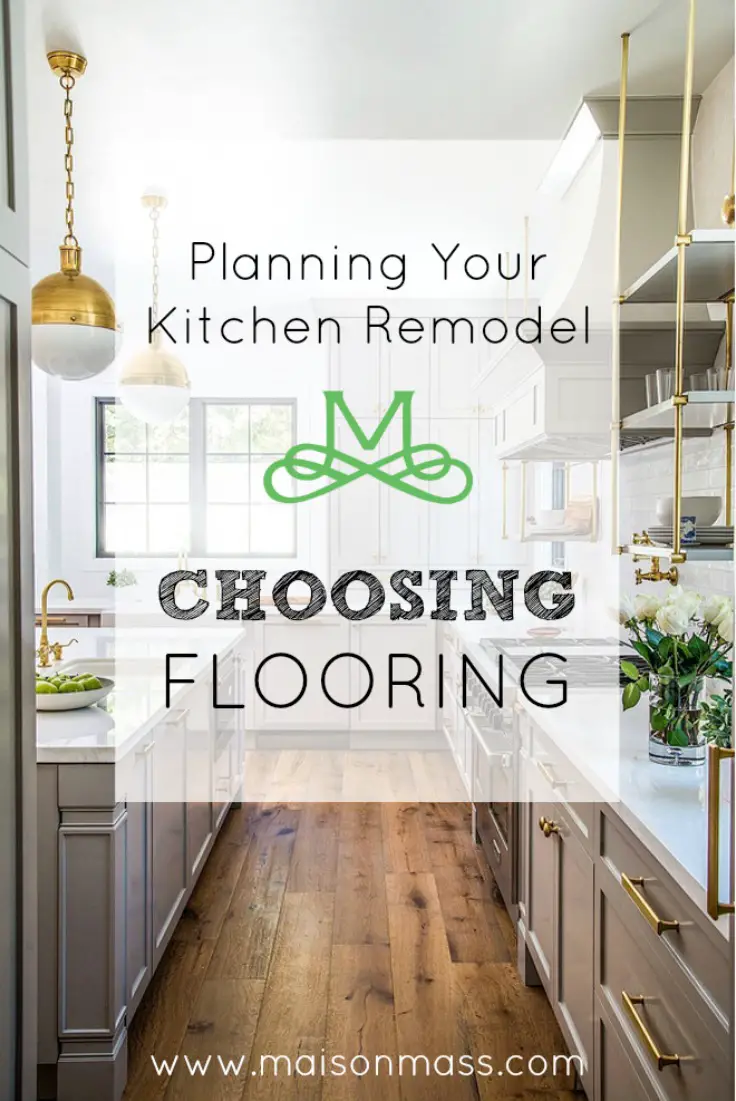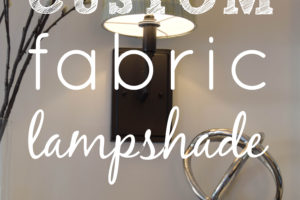The kitchen is usually the hardest working room in the home and the floor the hardest working surface. Your kitchen is the place where family and friends come together to celebrate life’s big and small moments. It is the space in which you nourish your family, where you welcome them in the morning, and reconnect with them in the evening. The kitchen floor is the backdrop for all these goings on; it need be functional and dependable. It need tie together each of the design elements you’ve agonized over: Cabinetry, Countertops, and Backsplash. It need be inviting, a place that encourages gathering, not just looks the part. Finally, no remodel conversation can take place without consideration of the budget. Each kitchen flooring material presented below is thus graded accordingly, measured by Durability, Style, Comfort, and Price.
Flooring Factors
Durability: Whether you fancy yourself a cook or not, the kitchen floor sees a lot of action. Many kitchens are used as an entry way into or a pass through to the house – providing both heavy traffic and an array of outside elements. In combination with the dirt, sand, salt, and water tracked-in, you can expect daily kitchen spills like oil, sauce, coffee, and wine. With time maximization in mind, you want a material that’s easy to clean, and stain-resistant. These are the norms; if you use your kitchen differently or have other considerations like pets, you’ll want to throw that into the mix as well. Durability and functionality must then drive your flooring decision. Luckily, there are a wide variety of beautiful, durable, and affordable options available to you.
Style: Choose floors that compliment your new or existing kitchen. Cabinets, countertops, backsplash – all are variables in your design style. Also, consider the overall area of the floor, as well as any odd spaces you might have (alcoves or narrow walkways). A very narrow or small space might inhibit the laying of oversized tile. Also, though addressing the kitchen, consider the overall floor plan of the house and whether you might be looking for floor continuity throughout. Color and pattern should be taken into account as well. If you expect your other surfaces (cabinets or backsplash) to be busy style-wise, you might seek a more muted flooring as backdrop. Conversely, if you chose simple lines and colors elsewhere, you might opt for a tile with variation.
Comfort: If your kitchen is indeed the hub where you’ll both cook frequently and entertain others, you might want to look at materials that have some spring. Concrete, for instance, can be hard on your feet (and dishware), whereas, cork actually has elasticity and give. As with most things though, accommodations can be made. So, if you’re in love with a hard porcelain tile, perhaps a spongy floor mat between sink and island will be your solve.
Price: Floor materials are calculated by square foot. Measure your kitchen (alcoves and strange spaces alike) to get an accurate area. Costs delivered below are based on material alone. Other factors that affect overall cost are demo (and/or disposal) of existing flooring, underlayment, and installation. Installation can vary based on material and condition of existing floor. A contractor should be able to give you an accurate assessment after examination of floor.
Flooring Materials

Hardwood Floor
-
- Solid Hardwood is milled from a single piece of wood, cut into floor boards. It can be sanded and refinished repeatedly, making it a long-term option (the cost variable being the sanding and finishing). Most common hardwoods include maple, walnut, cherry, hickory, and birch. Solid hardwood comes prefinished (for easier installation) or unfinished (for on-site finishing, which allows for more stain varieties). It is usually nailed or stapled, and/or glued to a wooden subfloor.
- Engineered Hardwood is created by bonding hardwood layers together in a cross-grain construction. Using less lumber, it is a greener alternative to solid hardwood and can stand up to moisture better than any solid hardwood finished on-site. Certain varieties can even mimic reclaimed timber but without the high costs of true salvaged lumber. Sold pre-finished, it is a quick and easy install, as it can be glued or floated (attached to other boards rather than the subfloor).
Durability: Though this can vary slightly between species, in general, hardwood floors stand the test of time. Hardwood stands up to spills and stains. Be wary of pets’ claws or standing water though (imagine a dishwasher leak). Sunlight can bleach floors if stained with dark finish. Floors can be resanded (to remove any dents and scratches) and restained, providing for different style options in the future. Avoid oil-based sprays and waxes and abrasive cleaners. Simply sweep regularly and wipe surface with a damp mop or cloth.
Style: A long-time favorite for new and old homes alike. This classic floor creates a natural, warm atmosphere, whether you opt for light or dark, shiny or flat. Variations in hardness, color and graining will differ greatly by species. It is helpful to look at each species, done in different stain options, as a dark stain can sometimes achieve a similar effect to a naturally dark wood. Keep in mind: dark and very light floors tend to highlight dirt. After grain and color, you should think twice about width too. Wide planks (greater than 3”) create an old-world feel, thin planks a more sleek look. Hardwoods are a good option too for houses with open floor plans as their beauty and versatility make them viable options for living and sleeping areas.
Comfort: Hardwood can be tough on your feet for long periods. Consider an underlayment of cork or form to provide limited spring and absorb otherwise potentially creaky floorboards. If floor continuity throughout the first floor is sought, area rugs make great layering options for hardwoods in other living areas.
Pricing: $4–$12 per square foot

Source: HGTV; Bamboo
Bamboo Floor
Bamboo is the most durable of the environmentally friendly flooring products. This rapid growing grass is actually harder than many types of wood. Whereas hardwood is milled from one piece of timber, bamboo boards are strips of grass adhered together to make planks. They can be laid horizontally (to emphasize the stalk’s ‘knuckles’) or vertically. Shredded strands can be woven and glued together as well, creating the hardest of bamboo surfaces. Owing to its newness, it is still considered fairly trendy. It comes in planks or tiles, and now in a variety of colors, patterns, and sizes. Like hardwood, it can be purchased as solid or engineered; the bamboo variances are the same as those for hardwood.
Durability: Very similar to many types of hardwood, bamboo is appreciated for its durability and permanency. They can scratch and dent though under the weight of heavy furniture. Pets’ nails need be kept clipped. As with hardwood, spilled liquids need be cleaned up quickly as prolonged moisture can contribute to warping. Quality can be measured in the life of the warranty, so choose a long-lasting warranty if possible. Sweep regularly and wipe surface with a damp mop.
Style: Appearance is largely determined by construction: horizontal, vertical or stranded. Each has a unique look. There are also different finish options; natural bamboo is a blond color. Like with hardwood, there are a variety of stain options. Lastly, you can opt for a carbonized bamboo which is pressure-heated to brown the raw sugars of the grass. This mimics the warm caramel color of stain without application.
Comfort: Probably the most comfortable flooring option because of its elasticity, it makes kitchen work light.
Price: $5–$7 per square foot.

Source: Better Homes & Gardens; Polished concrete
Concrete Floor
There’s likely no floor as durable as concrete: sealed concrete won’t dent, scratch, or show stains; it is literally road-worthy. It will, however, break every glass plate it comes in contact with. Concrete is heavy; if you’re hoping to install concrete over a subfloor supported by joists, you’ll need a structural engineer to determine if your floor can stand the weight. In that case, lightweight concrete may be an option. If the floor is poured on grade (to serve as floor foundation), there is no weight concern. However, that introduces another consideration: concrete can crack over time due to settling and swings in temperature. Re-sealing is recommended. For those interested in an environmentally friendly source, this may not be the optimal choice. Though concrete in its powder form is biodegradable, it requires a lot of energy and water to process and then, of course, in its finished state it is far from environmentally friendly.
Durability: The most durable of floor options, it is also water resistant. Properly sealed concrete is immune to dirt and stains; unsealed concrete is more absorbent and will show the aforementioned. Re-sealing is recommended. Sweep regularly and wipe with a damp mop.
Style: Concrete makes a statement. It has a contemporary, industrial look and is sometimes associated with city lofts or very modern homes. Modern finishing techniques are now making concrete a more viable aesthetic in all styles of homes. Dyes added in the mixing stage can create an array of earthy colors. Acid and concrete stains, concrete paint, and textured stamps applied with rubber stencils can create a look you wouldn’t recognize as being concrete. These finish alternatives create a warmer atmosphere than that of its cool, gray sibling. Polish and wax give it a dressed-up look.
Comfort: Concrete contributes to air quality, as it inhibits mold, mildew, and odors. Because the material absorbs heat, it can cut energy bills and is not as cold on your feet as stone. It is, however, hard on your feet and joints if standing on it for prolonged periods of time.
Price: Ranges widely between $2–$20 per square foot

Source: Lauren Liess; Cork floor
Cork Floor
Cork is made from tree bark, harvested primarily from the cork oak, indigenous to the Mediterranean coast. This green flooring surface offers a unique texture and look. More importantly perhaps, it boasts a padded feel underfoot, absorbing spring. Cork is available in tile, planks, and sheets with choices in width. Like hardwood and bamboo, cork offers installation choices too; glued or floating. It can be finished on-site or purchased pre-finished. If installing cork tile (rule of thumb is the same for any tile), order a couple additional pieces to serve as replacements should one get damaged.
Durability: Due to new factory finishes, cork is more durable now than just a decade ago. Thicker widths are more desirable both for insulation and durability. It’s naturally anti-microbial, thanks to a waxy substance in the cork, which repels insects and pests, and mold. Though slip-resistant and resilient to everyday wear, it can potentially dent and scratch, causing surface imperfections. Exposed to prolonged sun, cork will fade in color. It can, like wood, be sanded and refinished. It should be sealed at installation to avoid water damage and standing spills be cleaned immediately. Sweep regularly and wipe surface with a damp mop.
Style: Due to its texture, feel, and sound absorption qualities, cork creates a very warm atmosphere. There are a multitude of stain options; or you can opt for the natural, unstained look. Patterned varieties are also now available. Wax, polyurethane and vinyl top coatings will also drastically vary the appearance.
Comfort: Known best for its springiness, cork is applauded by cooks everywhere who spend hours on their feet. Unlike some of the harder green materials, cork’s bounce can prolong the life of your dishware. It might truly bounce back. Cork is a natural insulator against both temperature change and noise.
Price: $2 to $15 per square foot.

Source: Armstrong; Laminate tile
Laminate Floor
Laminate was all the rage in the late 70’s and 80’s, after which, it seemed to go into hiding. It is a synthetic flooring constructed of four layers: a melamine wear layer, a high-resolution photo, a dense core board, and a melamine backing, all fused together in a lamination process. The word synthetic is misleading as laminate is actually eco-friendly; it uses less natural material than other floors. Laminate is widely appreciated for its affordability, but today’s technology has gained it entry into the design arena as well. It’s also very easy to install and remove, making it a DIY preferred pick. The “great imitator”, as it’s been called, can realistically mimic wood and stone, with neither the price tag nor the maintenance the real things demand. That said, it is not considered a high-end finish, nor does it add value to a home.
Durability: It easily resists stains and scratches. The top layer can withstand most abuse, including high traffic and pets’ nails. Laminate does require an underlayment to act as a moisture barrier. It’s low-maintenance, not requiring future sealing, waxing, or oiling. Clean-up is easy. Sweep regularly and wipe down with a damp mop.
Style: Laminate does not profess originality; rather it seeks to masquerade as its competition. Wood-look laminate is available in a variety of colors from blond to black and textures that more closely resemble distressed hardwood. Stone-look laminate is found in earthy neutrals and tile laminate resembles the patterns often associated with ceramics. It comes in strips, planks or tiles, just as would the authentic material it’s seeking to mimic. Similarly, it comes in matte and glossy finishes.
Comfort: When ranked among all the floor options, laminate falls right in the middle. It isn’t nearly as hard as stone, tile, or concrete but not as giving as cork or bamboo. An underlayment of thin foam can help to increase its give, making it a more ergonomic flooring choice.
Price: $1.50–$5 per square foot.

Source: Home and Decor; Wood plank porcelain tile
Porcelain Tile Floor
Made from heated, refined clay, porcelain tile is an ever-popular choice for kitchen flooring, owing to its great durability, affordability, and availability of offerings. It’s a low-maintenance option which in a busy kitchen resonates with a lot of people. Large tile requires a perfectly level subfloor and probably a professional installer to see to it.
Durability: This tile variety is the most durable. For that reason, it’s long been used commercially, before keen homeowners stumbled on this well-kept secret. It’s hard, won’t chip, scratch, or stain. It withstands heavy foot traffic, water, spills and doesn’t absorb odors or bacteria. It is impervious to spills and moisture. One of the only truly pet-friendly surfaces.
Style: Large-format tiles — 12″x24″ and even 36″x36″ — have gained recent favor over the stodgier 12″x12″. Porcelain tiles can replicate real stone and wood with such detail, you’ll have to touch it to know the difference. Wood-looking tiles are actually offered in a variety of longer lengths to resemble wood planks. Porcelain tiles come in every color and in multiple patterns (e.g. hexagonal mosaic or basketweave) and large tiles can be arranged to create their own patterns, either with the same tile or using other colors and sizes.
Comfort: The durability that makes porcelain so desirable is also its biggest drawback. Standing on tile for long periods of time can be tough on legs and backs. Porcelain is cold to the touch, but, like stone tile, is a great choice to be used in conjunction with radiant heat, as it holds the warmth for a period after the coil has ceased to heat.

Source: Modern Country Style; slate tile
Stone Tile Floor
Popular stone flooring options include slate, travertine, and marble. Like all raw materials, the variations and colors vary from piece to piece, creating a natural, earthy feel. Stone floors are more popular in certain climates, particularly in the Southwest where cool stone helps keep temperatures down. In cool climates, stone floors become energy efficient when paired with radiant heat, because the stone maintains and distributes the warmth better than wood. You will need a strong subfloor for laying large stone tiles; make sure to connect with your contractor about this ahead of time.
Durability: This varies between stone choices. Marble and travertine are very hard stone and won’t chip, but polished pieces can be prone to staining and scratching. The higher the sheen, the more susceptible it is. Natural-finish tiles, however, are more durable, blemish-resistant, and will weather over time, endowing it with distinct character. Slate, with its dark natural color variations, will help to hide dirt and mud, but can chip. Like the coloring, the natural stratification of the stone allows for chipping without drawing attention to it (like peeling a thin layer of skin).
Style: Marble and travertine are the stones of kings and queens and can impart a very regal look. Very polished marble can emit a glow and appears translucent. The polish that achieves that look though, also makes it a slipping hazard (especially in a kitchen). The high polished variety is not truly recommended for high-traffic areas like this one. Natural-finish marble and travertine stone are less opulent, more subdued. Travertine comes in an array of warm tans, beiges, and greys, while veiny marble is best known for its whites and greys and occasional dark browns. Slate hues vary but it’s is most recognized for its dark grey and browns. Its low sheen and raw texture, imbue it with a real sense of nature. As with all raw materials, there are variations, sometimes subtle, sometimes sharp, between stone. You can either embrace the inconsistency or you can plan (and pay) for it by ordering additional tiles, allowing you some leeway to swap out pieces you don’t feel ‘fit’.
Comfort: Stone is, as you’d imagine, hard to stand on for long periods and can contribute to leg-fatigue. Slate has a rougher texture to it than its sister stones, marble and travertine, allowing for better grip. The other two can be slippery.
Price: Depending on stone choice $2–$25 per square foot.

Source: Floor and Decor; luxury vinyl wood-like planks
Vinyl Floor
Vinyl is made up of four layers: a protective urethane top coat, a protective clear vinyl layer, a printed design layer, and a felt or fiberglass backing It is one of the most affordable flooring options, offered in a variety of textures and styles. It’s available in 6 and 12 foot sheets (requiring professional installation), planks, or 12 and 18 inch tiles, perfect for DIY installs. It does, however, presume a flawlessly level floor.
Durability: Unlike other flooring materials, the quality of vinyl can differ greatly, correlating to its lifespan. Vinyl is the most water-resistant flooring option. It is, generally, a durable surface though a sharp edge can gouge a lower quality vinyl. It is resistant to spills, scratches, fading and denting. Luxury vinyl models can handle kids and pets easily. Many types are also suffused with antimicrobial protection to fight bacteria, mold, and mildew. For glossy floors, occasionally strip and reapply polish as necessary. Avoid waxing or buffing the surface. Sweep regularly and wipe with a damp mop.
Style: Like laminate, vinyl comes in 3 varieties – sheets, tiles, and planks. It too is designed to mimic other materials: including stone, tile, and wood. The sheets allow for a seamless, clean, modern look; whereas the planks are designed to mimic hardwood, with realistic colors and textures and beveled edges, to encompass even exotic species. The tiles resemble those of porcelain and stone. Like real tile, the vinyl can be arranged to create patterns, emulating ceramics. It is limitlessly customizable.
Comfort: Luxury vinyl flooring is sound absorbent, ergonomic and touts thermal benefits to reduce heating costs. Its Walk Soft backing also provides reduced fall consequences, making it a very comfortable and practical solution for many families.
Price: $1.50–$5.00 per square foot.
The Bottom Line:
Don’t fret flooring. Today’s kitchen flooring materials are made to specification. The differences between materials as noted above are usually very subtle. Only sometimes are they glaringly disparate. You have to consider the specific demands you place on your floor. If you’re a pet lover, you might opt for a harder surface that won’t scratch or gouge with paws’ claws. If you expect to have toddlers at your feet, you might want a softer surface that won’t cause them nicked knees. Perhaps, you are busier than you have time for, but still expect to cook in every spare minute. You’ll want a surface that is maintenance-free. Only you know your drama; try to choose your flooring with that in mind. The good news is that once you’ve worked through the durability and comfort factoring, you’re fairly home-free. Unless of course, you’re a true purist and want absolute authenticity in your floor.
As you read, you probably noticed that many of today’s materials are manufactured with options, so many options. They are built for durability and comfort… and aesthetic. Most materials are made with other materials in mind. Aside from hardwood, bamboo, and stone, the other surfaces work to mimic each other. So, if you had your heart set on a hardwood look but can’t abide by the dog scratching them up, choose an alternative that give you a wood look: porcelain, laminate, or vinyl. Just make sure you communicate your flooring priorities to your contractor who can then weigh in about installation. There is no reason you can’t have the durability and comfort you need and the look you love at the price you want.
Lisa
For more in our kitchen remodel series:
Gathering Inspiration
Budgeting
Design Guidelines
Cabinetry
Countertops
Backsplash
Don’t miss the next installment in our Kitchen Remodel series! Subscribe below:











